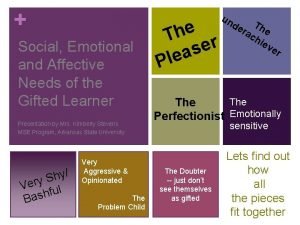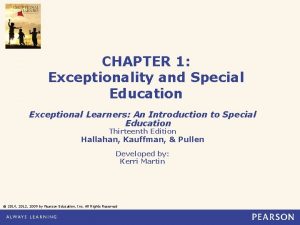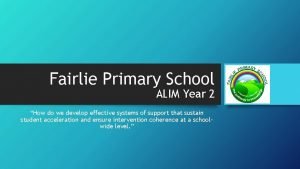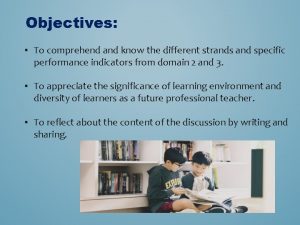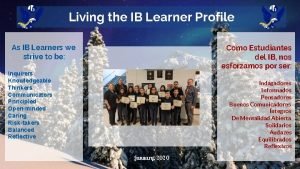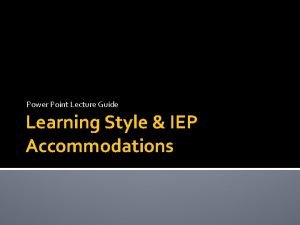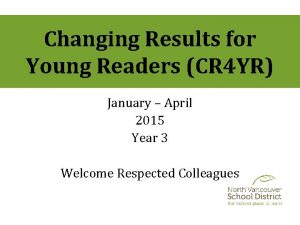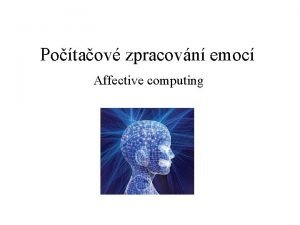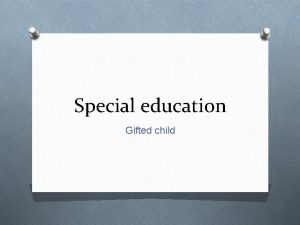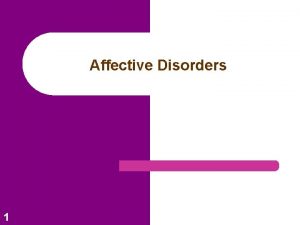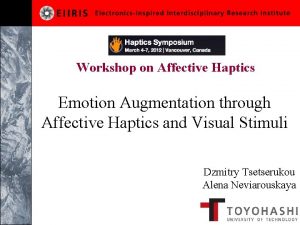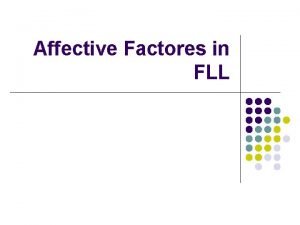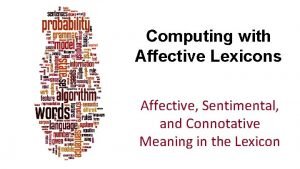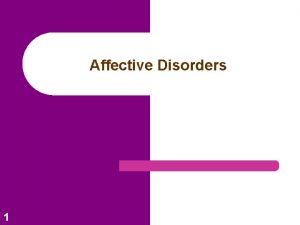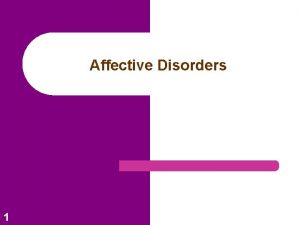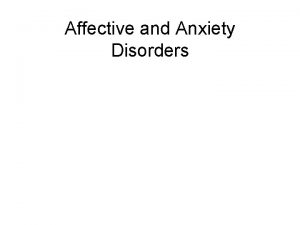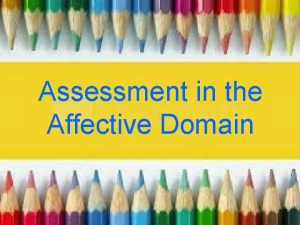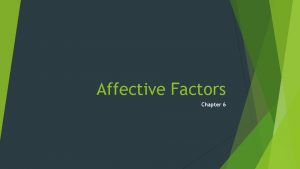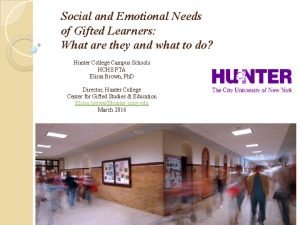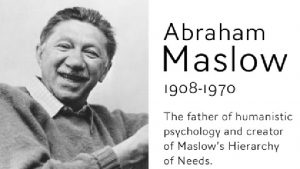Gifted Learners Addressing Their Affective Needs 1 Addressing
















- Slides: 16

Gifted Learners: Addressing Their Affective Needs 1

Addressing Affective Needs Social and emotional issues Classroom strategies Affective curriculum/ guidance and counseling plan 2

It is important that affective goals be attended to as well as the cognitive and academic goals. Self concepts, attitudes, motives, values, interests, and emotions are components of positive self actualization and functioning fully in society and the curriculum must contribute to nurturing the affective domain as well as the cognitive domain. —A. Harry Passow (1986)

Characteristics and Interactions Cognitive Affective Interaction Possible issues 4

Ov Peer pressure er e xc ita m is n o i ct e f r bil itie s Pe Possible Issues ness e v i t mpe Introv ersion Co Soc skil ial ls f. Sel m/ ee est ity t n ide 5

Responsibility and leadership Career exploration College guidance Family dynamics Study skills 6

Building a Context to Address Affective Issues 7

Fostering a Supportive School Context Psychological safety Flexible programming Being with other gifted students Services that focus on whole child Meaningful interactions with adults Curricular outlets for expression of intensities 8

Discussion groups Guided reading/ viewing Journal writing Strategies for Affective Needs Pair problem solving Spatial strategies Roleplaying Mode switching 9

Additional Components to Address Affective Needs Professional development for teachers and parents Differentiated college and career planning 10

Scope and Sequence • Scope refers to the comprehensiveness of the curriculum: – What are the important skills, attitudes, and supports needed to be built into the learning experience? • Sequence refers to the organization and order: – When is the student ready for what topics? – How can we transition well from elementary to middle to high school? – What do we want the students to be able to do at particular times? • Map out the affective curriculum for your K– 12 highability students; include social skills, college and career guidance, and attention to social and emotional needs. 11

An Affective Curriculum Meeting social and emotional needs, K– 12 Parent education Professional development for faculty/staff A planned set of experiences Differentiated for the gifted child Partnership between the G/T specialist and the counselor 12

Applying Guidance and Counseling Activities With Gifted Students Role of teachers • Incorporate guidance and counseling activities into the classroom. Role of counselors • Work with coordinators and teachers to create a standards-based guidance and counseling plan that is differentiated for gifted students 13

Logistics When? • Homeroom/adv isory/morning circle time • Language arts or social studies class • Health and wellness class • Guidance activity times • Lunch By Whom? • Homeroom teacher • Humanities teachers • Counselor • G/T resource How? • By taking the gifted students separately so the discussion can be differentiated 14

K– 8 Affective Curriculum Map Subject K 1 2 3 4 5 6 7 8 Academic Development (e. g. , learning to be organized, learning to deal with doing well) College and Career Development (e. g. , exploring careers and the education needed, visiting college campuses) Citizenship (e. g. , understanding how to get along, managing stress, understanding emotions) 15

Grade-Level Curriculum Map Subject First grading period Second grading period Third grading period Fourth grading period Academic Development (e. g. , learning to be organized, learning to deal with doing well) College and Career Development (e. g. , exploring careers and the education needed, visiting college campuses) Citizenship (e. g. , understanding how to get along, managing stress, understanding emotions) 16
 Affective needs of gifted students
Affective needs of gifted students Government program for gifted students in the philippines
Government program for gifted students in the philippines Affective curriculum
Affective curriculum Flat addressing vs hierarchical addressing
Flat addressing vs hierarchical addressing Simple claustral complex
Simple claustral complex Strategic gender needs and practical gender needs
Strategic gender needs and practical gender needs Primary needs and secondary needs
Primary needs and secondary needs Types of need analysis in esp
Types of need analysis in esp Satisfaction
Satisfaction Exceptional learners: an introduction to special education
Exceptional learners: an introduction to special education Fairlie primary school
Fairlie primary school Diversity of learners
Diversity of learners Ib learners profile
Ib learners profile Global vs analytical learners
Global vs analytical learners Questioning and discussion techniques
Questioning and discussion techniques Visual iconic learners
Visual iconic learners Changing results for young learners
Changing results for young learners
